- FOKION AVGERINOS – DR. IKE: Athletic Director, Youth Mentor, and Healer
- American Hellenic Institute’s Golden Jubilee Celebration
- Leadership 100 Concludes 33rd Annual Conference in Naples, Florida
- Louie Psihoyos latest doc-series shocks the medical community The Oscar–winning director talks to NEO
- Meet Sam Vartholomeos: Greek-American actor
Dimitris Yeros: Shades of Love …in the Time of Cholera
by Athena Efter
NEO had the privilege to interview this great artist/photographer, Dimitris Yeros, who has been defined as one of Greece’s most influential artists of his generation. In this interview, he shares his candid thoughts about his work, his art, his inspirations, the economic crisis in Greece, and the passion that motivated his book Shades of Love, a visual reflection on the Greek poet Constantine Cavafy. His friendship and artistic collaboration with the acclaimed Colombian author Gabriel Garcia Marquez was of particular fascination.

Dimitris Yeros
You’ve photographed a lot of well-known writers, artists, filmmakers, actresses and composers, and, to name a few, like Gore Vidal, Edward Albee, Olympia Dukakis, Costa-Gavras, Dennis Oppenheim, Jeff Koons, Carlos Fuentes, Michael Cacoyannis, Louise Bourgeois, and Gabriel Garcia Marquez. Besides the obvious, that they are famous and talented, what did you want to elicit from each? What is it that captivated you most, the human as an artist, or the artist as a human?
All these famous people you mentioned will respond and behave in a totally different way to a friend or an artist they are personally acquainted with than they would to a reporter. Like me, there are not many photo reporters they like, because they often take their photographs in a hurried and slapdash manner, and their subjects often end up looking ugly. With me they are more relaxed and approachable. They trust me. They know I will portray them in the best possible light, so to speak, since I look for and bring out their most photogenic side. Some often ask me to photograph them again.


The human portraits in your photographs often have a contemplative mood, often characterized by an inner mystery that’s both alluring and unsettling at the same time. Is this intentional?
Everything, or almost everything, is deliberate. In my work randomness does not play a major role. Everything is planned and premeditated. This is more so in my paintings, since mistakes there cannot be corrected.
Are you “old school” or “new school” when it comes to photography? As an experienced artist, having worked with several mediums, do you find there is a difference between digital and film photography? Which do you prefer?
I think I’m closer to what we call an academic artist. Of course, there are differences between analog and digital photography, but the photographer will portray his subject equally well regardless of the medium used. The fact is that the situation with analog photography becomes harder every day, as there is a smaller variety of photographic film and processing laboratories becoming a vanishing breed. On the other hand, digital photography offers a wide range of new possibilities and at quite a low cost.
Which is more challenging to you as an artist, photography or painting? Or do they both have their own set of challenges?
Both forms of art are extremely challenging for me. Although I am primarily a painter, I have been engaged in photography for about 30 years, and there are days when all I want to do is take photographs.
Your series “Photos on Cavafy” is a compelling series, where beautiful images and expressions on faces are transformed into the power of words. How did you go about choosing which poem to pair with which photo? Was it a random process of mix and match to see what kind of story each image would tell? Or was each poem carefully selected to define what you saw in each image? Here you have seductive images defined by seductive words to create a compass of seduction, where you draw us into an alternate reality through poetic storytelling and inviting images.
My book on Cavafy, Shades of Love, is my favorite. It took me about ten years to finish. The photography was determined by the poetry. I decided to pick all those poems, which created clear images when I read them in order to turn them into self-standing images. It was also determined by the models. Many of the poems were selected so that they could be illustrated with some of my famous friends whose lives or work were somehow associated with the great Greek poet. For example, I photographed the famous American poet Richard Howard portraying Cavafy, the sculptor Arman posing as the sculptor of Tyana, and so forth. I ended up with 67 poems. People unacquainted with Cavafy found some of the photos risqué, but those closer to his work agree that his poems were more daring than the photographs, especially if we take the time they were written into account.

Marquez with my painting Innocent Prisoner
Ah, Gabriel Garcia Marquez, acclaimed Colombian author and “magic realist”. I feel silly asking you why you chose him as the topic of your most recent book, especially after looking at your work online. It seems like the perfect union, where the magic of art and the magic of words come together to create a “magic realism.” What inspired you? Did you find camaraderie with him as a fellow artist? Did his novels and stories tell your stories in your pictures? What was it like working with Marquez as a subject? And what did you want to convey to us about him through your art?
With Garcia Marquez there was, from the very first moment, a warm kind of friendship, which was unfortunately cut short by his illness. So I was unable to take more photographs of him and create the book I had envisioned at the start. Marquez liked my work, and, in his home, he had one of my paintings which he loved. He found in my works a magical atmosphere in which, as he said, his own heroes would have felt at home. Photographing Marquez was sheer pleasure. He thoroughly enjoyed himself, although at the end of each session he told me jokingly that he would be going straight to bed because of me. In fact, I was the one who came out exhausted from those sessions as I had to take proper care of the greatest writer of the 20th century while being loaded with all sorts of heavy photographic equipment. Eventually, the photographs were published in a large-format book exactly one year after his death. Marquez had been looking forward to seeing the book but unfortunately it was not meant to be. The photographs I took of him were exhibited at New York’s Throckmorton Fine Art gallery in November 2015, and in Colombia’s Museo de Arte Moderno de Barranquilla, in the same month. Barranquilla is a large city near the village where Marquez was born. The writer spent several years of his youth there and I visited the places that he had frequented—among them a famous ice cream shop once owned by Greeks, which is still there today! Finally, in December 2015, the photos were exhibited by Pablo Goebel Fine Arts in Mexico, where Marquez had been living for many years. At the opening of the exhibition, we were honored with a talk by my friend and also a close friend of Garcia Marquez, Elena Poniatowska, arguably the most important woman writer in modern Mexico.

Selfportrait
When did you realize you wanted to be an artist? Did you always know or did you discover it by chance?
Once I began to understand the world, and to discover my surroundings in the small town where I was born, I knew that in my life I would do something different from what the average person does. I think I was special, creative, and a rather strange child who read a lot. I started at an early age to keep up with what was going on in the world of literature and the arts, not just in Greece but also in Europe. Note that at that time America was not yet the center of the art world. I was also very independent and somewhat rebellious. I had, perhaps even before I started elementary school, planned out my future, and the plan said I would work in the arts. After all, I knew I would never be able to work as a private employee or public servant.
You’ve been compared to Man Ray, both in painting style and photography. Has anyone ever compared you to a more uplifting version of the American photographer Robert Mapplethorpe or a more whimsical, less eerie version of the Italian surrealist painter, Giorgio De Chirico?
I think that what connects me to Man Ray is his proclamation: “I photograph what I cannot paint.” Mapplethorpe and De Chirico were great artists and their absence has left a huge gap.
Who were your inspirations?
At first, it was some of the Impressionists who, with their colors and broad brushstrokes, impressed me as a child. Immediately after, I discovered Picasso, Kandinsky and Duchamp. I fell in love with Surrealism in later years. In 1969 I had my first exhibition, with abstract and constructivist works, rather than surrealist ones. That was at Goethe-Institut in Thessaloniki, and the next year I had another exhibition at the New Gallery in Athens, which worked with some of the leading Greek artists. I was then between 20 and 21 years old and would pretend to be older in order to be more convincing with gallery owners and art lovers. My art, quite avant-garde for that time, was, I think, quite mature, unlike me, who lived rather irresponsibly. Let me remind you that, in those days, Greece was living under a military dictatorship and my works in those two exhibitions clearly showed my opposition to the fascist regime. They were covered with black barbed wire and some had flashing red lights, like imprisoned souls. This went down well with the Press and I had extensive and positive reviews.

The Upper Bottom
“There are only two great painters who have also been great photographers and artists—Man Ray and Dimtris Yeros, two artists who have much in common…”
John Wood, Critic and Writer
For one of your exhibitions, in Cyprus in 1980, you printed a poster which, instead of one of your works, as one would have expected, had a photograph of you dressed in national costume.
But I am a Rumeliot, after all, the descendant of a distinguished warrior of our War of Independence. I wanted to emphasize my Greek identity and this was at a time when the occupied part of Cyprus needed the support of the Greeks.
What are your thoughts on Instagram, iphones and readily accessible photo applications through technology that make everyone an “instant photographer”? How does this affect the world of photography? Do you think it’s cheating? Does it cheapen photography? In other words, what makes a good photographer?
In art, there is unfortunately an element of fraud. But good photographs are not made just with expensive equipment. You need the photographer’s exceptional gaze, his perspicacity, his expertise and the view he has of things and of the world in order to end up with good, artistic photos. The same is true for the other visual arts. There are excellent craftsmen, whom I envy, but they have no talent. They’re not creators. They are like a great typist or an infallible proofreader who cannot write a poem.
What are your thoughts on the economic crisis in Greece? How does it affect artists? Or does it, especially if we take into consideration the term “starving artists”? Is this one sad story that will continue, despite the economic crisis?
When 25% of Greeks are unemployed and many of them have to line up at soup kitchens, you understand that art is the last thing that concerns people. So, it is a fact that many artists are in dire circumstances. On the other hand, many among them and the majority of the unemployed, if they knew more about politics and voted more carefully, would not be in this sorry state, which I don’t know when it will end.
Does the Greek State help artists?
Not substantially. There is more cronyism than meritocracy. If you do not belong to the right circles, you can lose hope. You have to make it entirely on your own.
What advice can you give to “starving artists”? What is the difference between their work sitting under piles of dust in a dark basement or on exhibit at a well-lit gallery or museum for all to enjoy and possibly buy?
I think, from my own experience, but also from looking at the facts, that real works of art are exhibited and protected in well-lit museums, while works of no interest gather dust, as you say, in basements, or find their way to the landfill. I do not think there are unappreciated artists; maybe some are more visible than they should be or are overrated, but good art will not go unnoticed.

Are there artists in Greece who can compete on the international scene?
Greece has a number of leading personalities at all levels. In the world of art that interests you more, we have Lucas Samaras and Jannis Kounellis in the front line. But Lynda Benglis, Takis, or Chryssa are some of the many artists that enjoy international recognition. Unfortunately, neither the Greek state nor the Greek-American lobby has helped Greek artists. They could have pushed for a large museum in New York or some other city. They could have organized a traveling exhibition of contemporary Greek art, including some deceased artists as well such as John Xeron, William Baziotes, Nassos Daphnis, Stamos, Gigas and others. To show that we have always been pioneers, with major artistic forces. They could have done the same for photography.
Apart from Athens you also spend quite a lot of time on Lesbos, where you have a second laboratory. You are also preparing a book with photographs of immigrants and refugees. How much has life on the island changed over the last year?
For the people of Lesbos it was quite a shock. All of a sudden, there were about 30-40,000 immigrants in Mytilene, the capital, when the city’s population is 27,000. All these people had nowhere to stay and nowhere to wash. They certainly found themselves in a safe environment, and the locals were completely unprepared to welcome them and help them, but they did. The island has been in the center of international attention; even the Pope paid a visit. But the islanders also stood to gain from the services they granted. There were times when you couldn’t find a single vacant room in the hotels.
As it is, I photographed refugees at good times and at bad times. Unfortunately, although many publishers found the subject very interesting, no one wanted to print a book. Perhaps they did not want to be associated with Islam, or thought that the suffering of these people would not sell enough copies.
Lastly, what are your plans for the future as an artist? Any chance of coming to New York and having an exhibit?
On June 4th, Holden Luntz Gallery in Palm Beach had the opening of the exhibition “Contemporary Voices in Color Photography” in which I participate, along with Joyce Tenneson, Jan Groover and Kimiko Yoshida. The exhibition will last until July 23rd and it will be an opportunity for our compatriots living in Florida to see a part of my work. I have been collaborating with this gallery for many years and they frequently display my photos.
Also, I have just published another one of my books titled Another Narcissus, which contains a poem written in 2003 by my friend, and greatest living American playwright, Edward Albee. It was written about one of my photographs and I have illustrated it with 14 photos. The introduction was written by another important poet and art critic John Wood.
I hope that the beginning of the new year will see the publication of a new book with the photographs I’ve made of the very impressive koudounatoi (The bell wearers) of Lesbos.
For next winter, I’m thinking of staging an exhibition of my recent paintings in Athens, where I haven’t exhibited for the past 20 years, and then I’ll come to New York and arrange for their exhibition there. But I don’t yet know when or where. In New York, I’ve been working with Throckmorton Fine Art for many years.

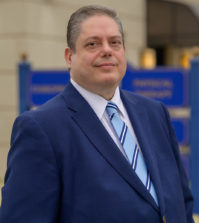
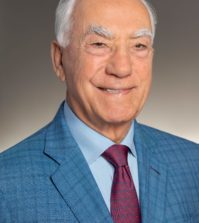
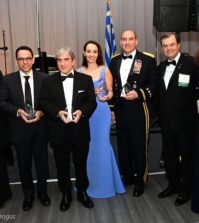
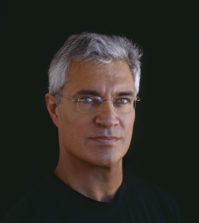

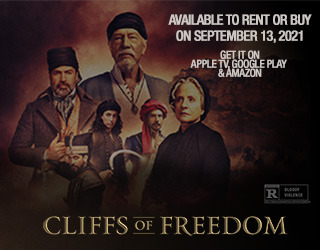

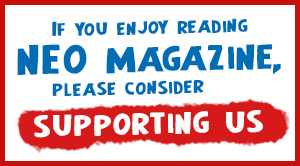






0 comments